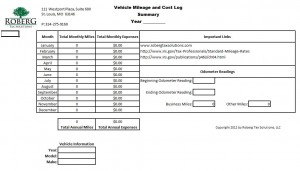EITC Special (February 2013)
__________________________________________________
Roberg Tax Solutions is offering a limited time, special deal on tax returns with an Earned Income Tax Credit.
This special price is only available to the first 200 people who make an appointment for this special offer, and is limited to February 1, 2013 – February 28, 2013.
For this time, we will offer our full service tax preparation services to our wage earning EITC clients for $200; that includes the cost of a bank product and all state returns. A bank product means that we take your payment out of your tax refund. You may either have your refund direct deposited into your bank account, or we can print a check in our office for you to pick up later. This works out to be a $50 to $75 savings off of our regular price depending upon your tax return.
This is a great savings from those other big ticket tax companies.
If you are self employed, for this special offer, we will prepare your EITC tax return for $350 including a bank product. That’s a $150 savings off of our regular price.
We do not provide Refund Anticipation Loans—that is, we don’t do fast refund money. Your refund will come after the IRS funds the money to the bank which generally is expected to take 21 days. If you have had problems with other people claiming your children on tax returns, this could take as long as 75 days.
What are the rules? You must legally be able to qualify for the Earned Income Tax Credit and you must provide the necessary documents that are required in the new IRS regulations. We will be making copies of all of your documents and we are required by law to hold copies of those documents for three years.
You will need to bring the following paperwork with you to your appointment:
- Social security cards for every person listed on your tax return
- W-2s
- 1099-MISC forms
- Any other income documentation
- Proof of your child’s residency such as recent school report cards or medical statements
- Proof of self employment income (if relevant)
- Driver’s license or other state issued photo ID
For more information on documentation, read our post about the new EITC rules: http://robergtaxsolutions.com/2012/11/what%e2%80%99s-new-with-the-earned-income-tax-credit-you-need-to-know-this/
This offer is limited to persons who can come to our office in person. We will not do EITC returns over the internet. (Sorry.)
If we discover that you are not eligible to claim an Earned Income Tax Credit, we will return your paperwork and you will be under no obligation to file your tax return with Roberg Tax Solutions. Of course, if you still choose to file with us, we’ll be happy to have you as a regular client—in which we have another offer for you on our special offers tab.
If you’ve been filing your tax returns with some cattle call tax office that treats you like a number instead of a person, maybe it’s time to try something different.
Call today to set up your appointment. (314) 275-9160 or visit www.robergtaxsolutions.
***Roberg Tax Solutions EITC Tax Return Special Offer***









